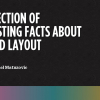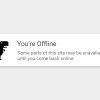
More insightful and useful patterns from Heydon Pickering.

More insightful and useful patterns from Heydon Pickering.

I learned a bunch about CSS Grid layout form this quick-hit piece by Manuel. Definitely worth a read!

Yes, yes, and yes!
So many folks spend time on their CSS and their UX/UI but still come up with URLs that are at best, comically long, and at worst, user hostile.

Quick an easy. Just like it says on the tin.

This looks like an amazing tool for diagnosing ways to squeeze more bytes out of you pages!

Some very interesting ideas and explorations of how to make your site better when viewed offline. Some very cool ideas here.

A great piece covering the various ways we, as web designers and developers, must practice empathy:
Upping the empathy quotient among decision-makers, designers, and developers is integral to ensuring the creation of a digital world for everyone.
The other day, Frances Berriman—who coined the term “Progressive Web App”—wrote a bit about how she came up with that name. In it she clearly points out that the name has become a little problematic in dev circles

Lots of real-world feedback about accessibility issues here. The laundry list of pain points is not insurmountable though:
You can address most of these easily.